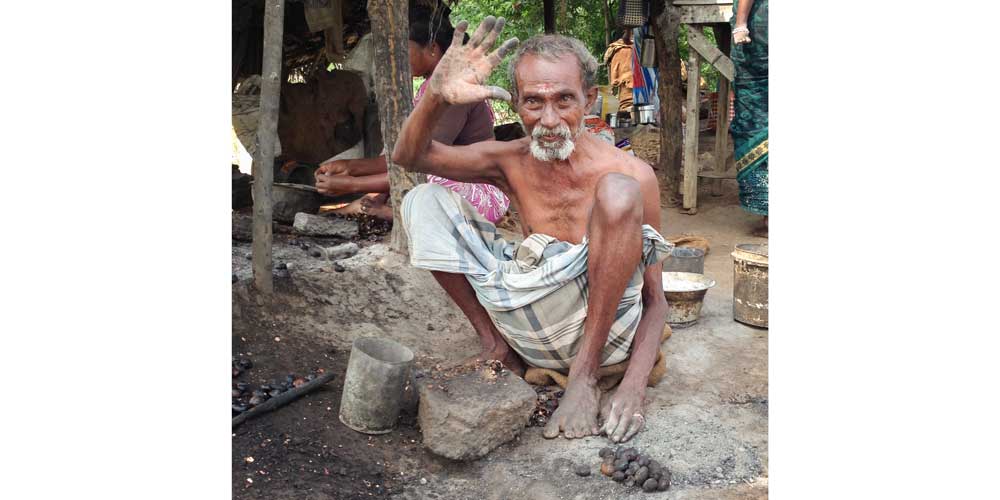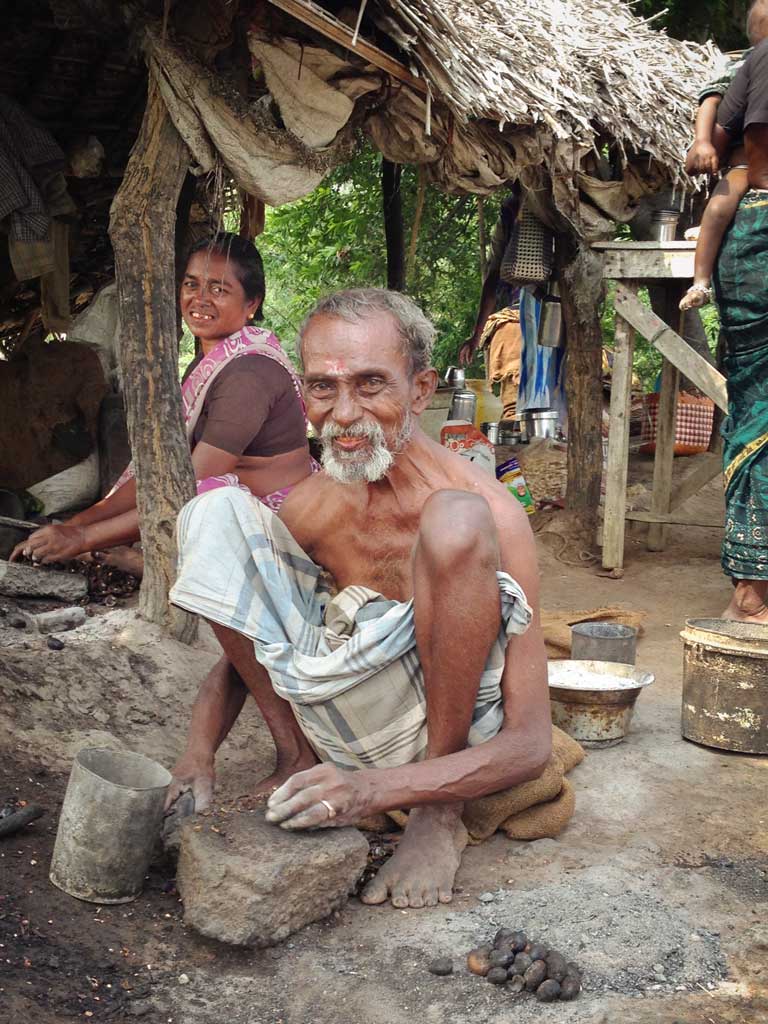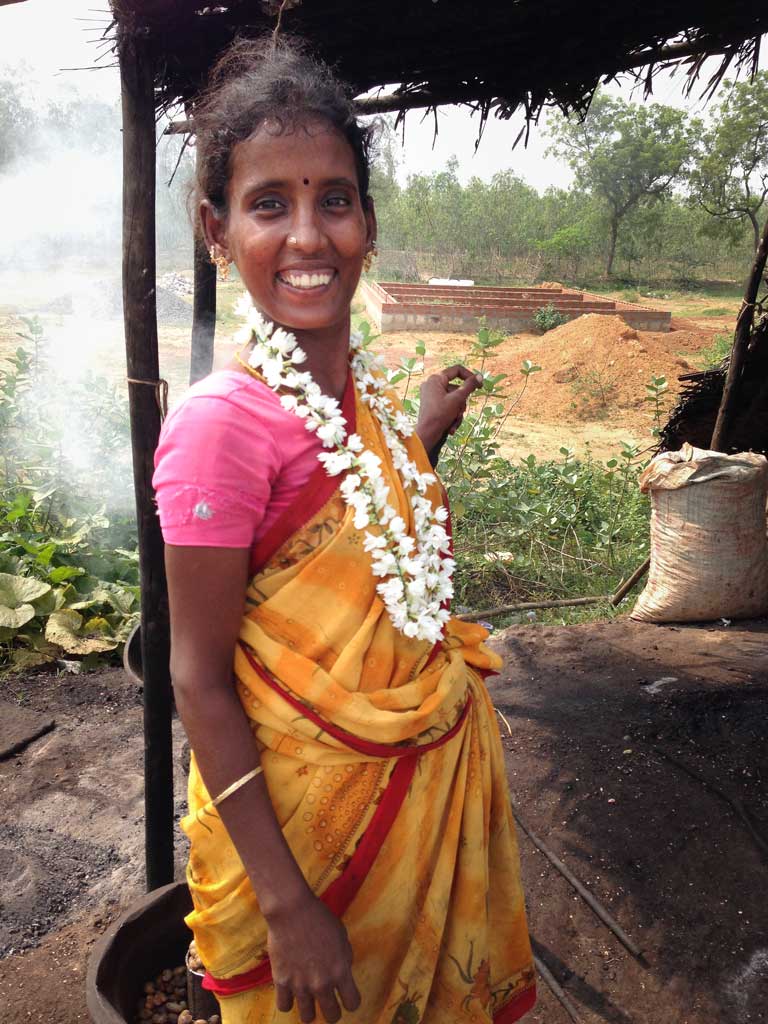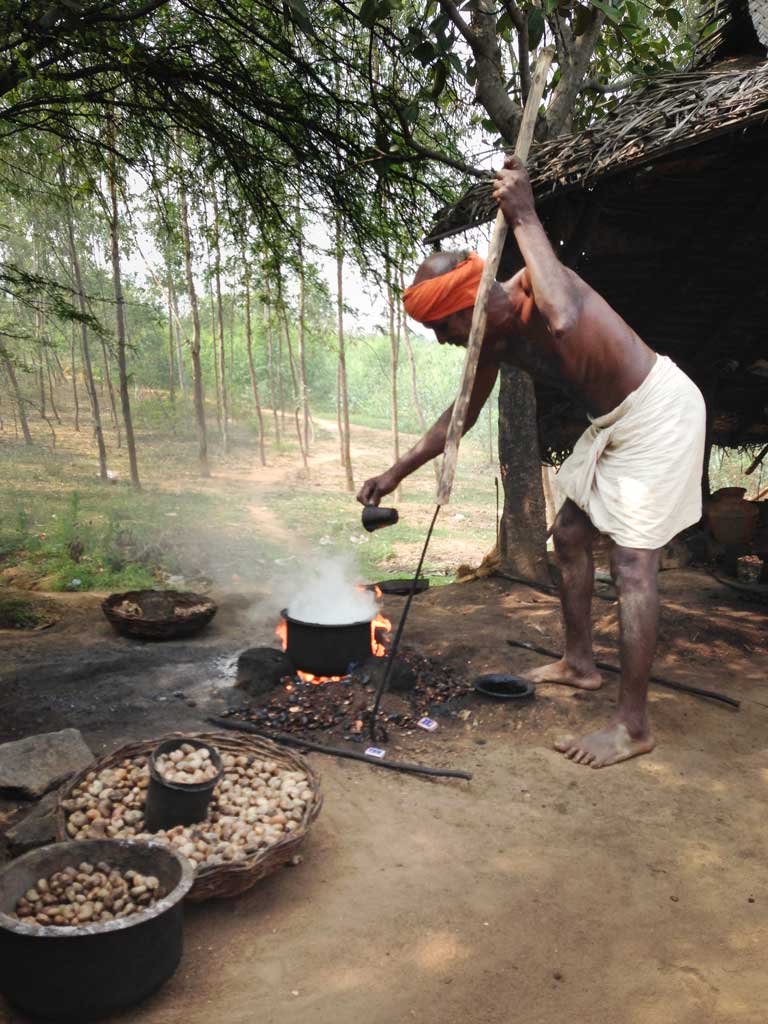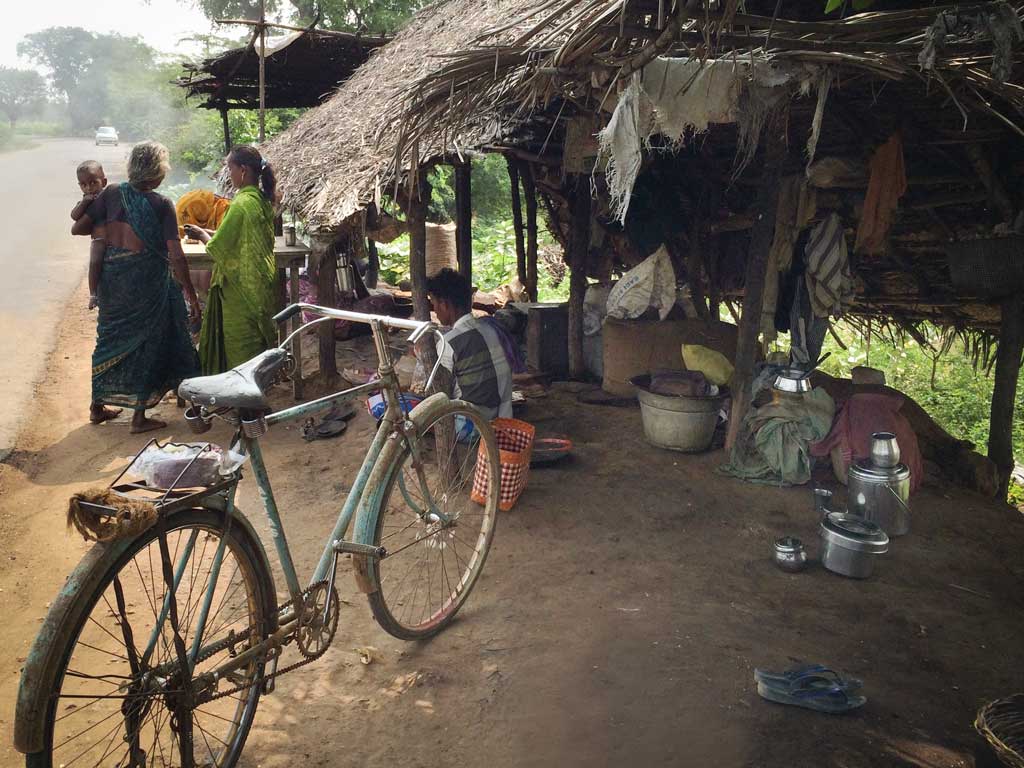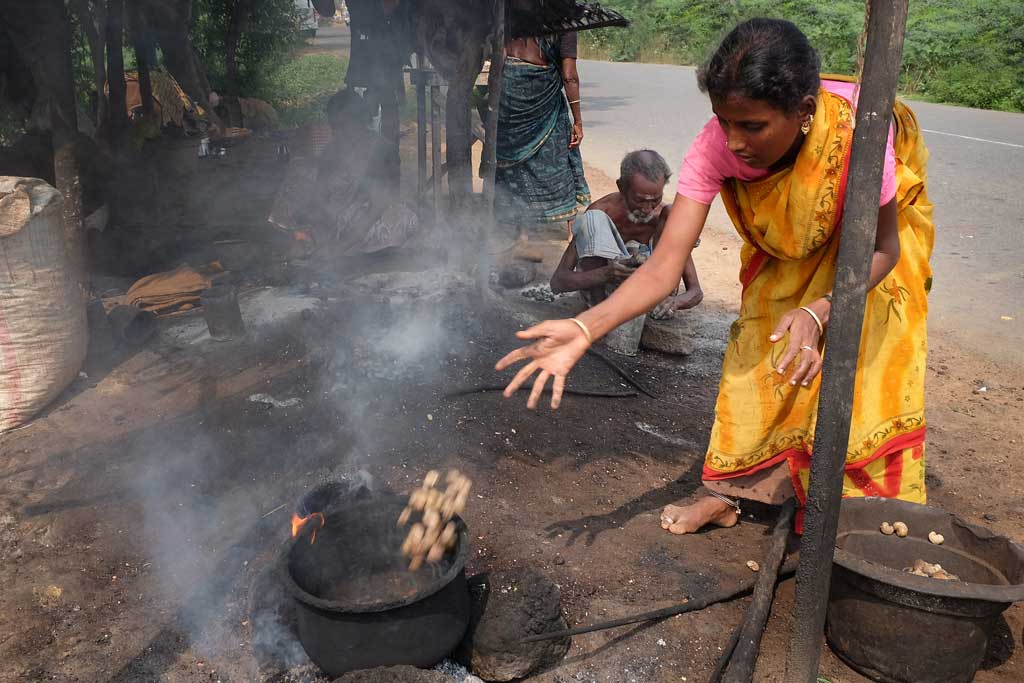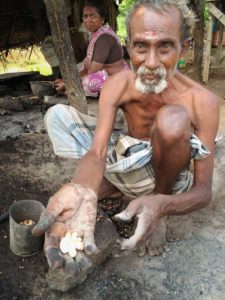He is forever embedded in our minds as the Cashew Man. We learned a lot from him.
The day was a body bulging with humidity. Breathlessly still, the air grew palpably heavy waiting to deliver its burden. Our pace slowed as if in sync.
We were winding our way along the narrow roads of southern Tamil Nadu. The dreamy pace could have lent itself to complete inertia had a hammock been near. Instead, we saw a cluster of cashew sellers clinging to the roadside and stopped for a stretch. Here was a chance to learn a bit about their lives. This is why we travel.
Cashews
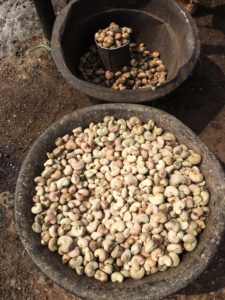
We hadn’t realized cashews grow in India. They are originally from Brazil but now India, and Vietnam, each hold 40% of the global market share. About two million people are involved in the industry.
Most of those people work in processing facilities but approximately 200,000 are smallholdings farmers with 1 to 10 acre plots throughout South India. While their crop is a luxury product with an estimated value of one billion (CAD) dollars most workers make less than a dollar a day.
Cashews are a seed, not a nut, as most people think. They come from a tropical evergreen tree. The cashew seed is in a small boxing glove shaped bit of anatomy known as the drupe. The drupe sits at the base of the cashew apple fruit.
Getting to the seed inside the drupe is laborious. The shell coating around the seed is poisonous (like poison ivy). It must be roasted and cracked before you can eat the interior that we know as the cashew.
Cashew people
We visited several of the lean-to huts serving as kiosk stores. Then, we settled in to visit with a business that was owned by one family. A couple roasted the cashews in metal pots on open fires.
When sufficiently toasted, or blackened actually, they passed the pods onto other family members to crack the shell and remove the inner seed. A woman squatted on the ground and used a blunt implement to work. She pressed the blackened shells between it and a bit of rock. It was hard and dirty work. Strain lined her face.
An older woman nearby held a baby. Another younger woman took our money. We each bought a few kilos of their produce. The total worked out to a few dollars.
The cashew man
We were about to leave when I squatted down beside an older man to say goodbye and thank you. I think, I hope, he was the grandfather.
He was as lean a person as I’ve seen. In India—or anywhere. There was no meat on his bones. His temples were sunken. You count count all of his ribs and yet, he did not hesitate. He held out his hand and offered me all that he had; a precious few cashews.
I took what he offered and noticed his swollen clubs for fingers. I wondered if they were swollen from exposure to the poison of the shells or from multiple burns?
I’ll never know. I smiled at him. I’d only wanted to talk and ask for a photo but I took the still warm cashews from his blackened hands and ate the offering without hesitation.
Putting my hands together in prayer, I said, Vannakom – the Tamil version Namaste or “I bow to the light in you.” I honoured him and his offering the only way I knew how. Dignity has so little to do with station in life.
Cashew Coconut Ginger Bars
Now, whenever I see cashews, the cashew man’s face is there in my mind. Cashews and the man. The man and cashews.
I think also of South India, my friends, the softness of the hills and the air that day. The harshness of some people’s lives stands in stark contrast. It all melds into an indelible taste memory.
I developed our Cashew Coconut Ginger Bar recipe to remember the Cashew Man and our brief but powerful connection. The bars are sweet, the memory is bittersweet.
Note: A version of this story was originally published on Karen’s blog – Savour It All™. It is unsponsored content here and used with full permission.

